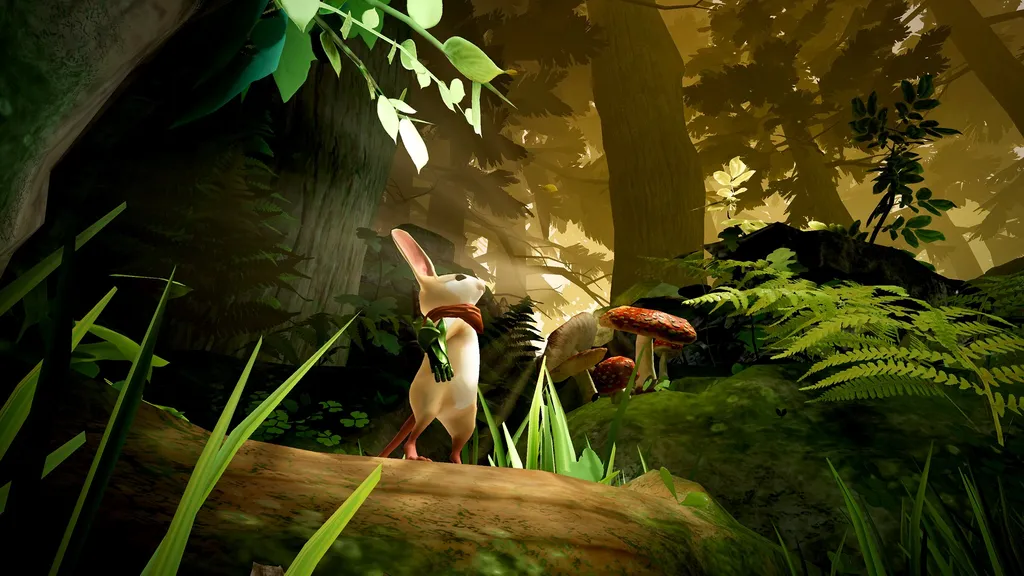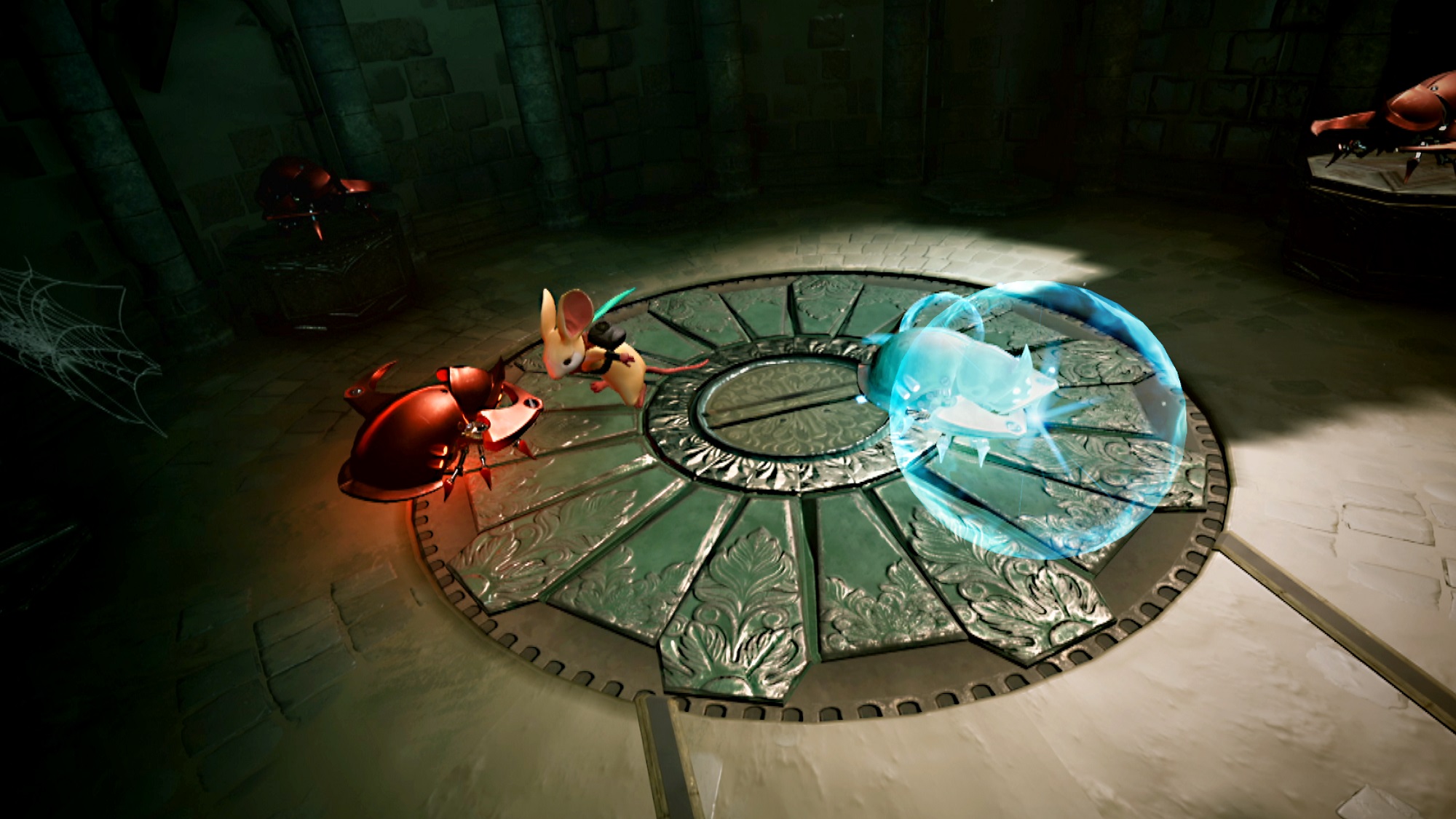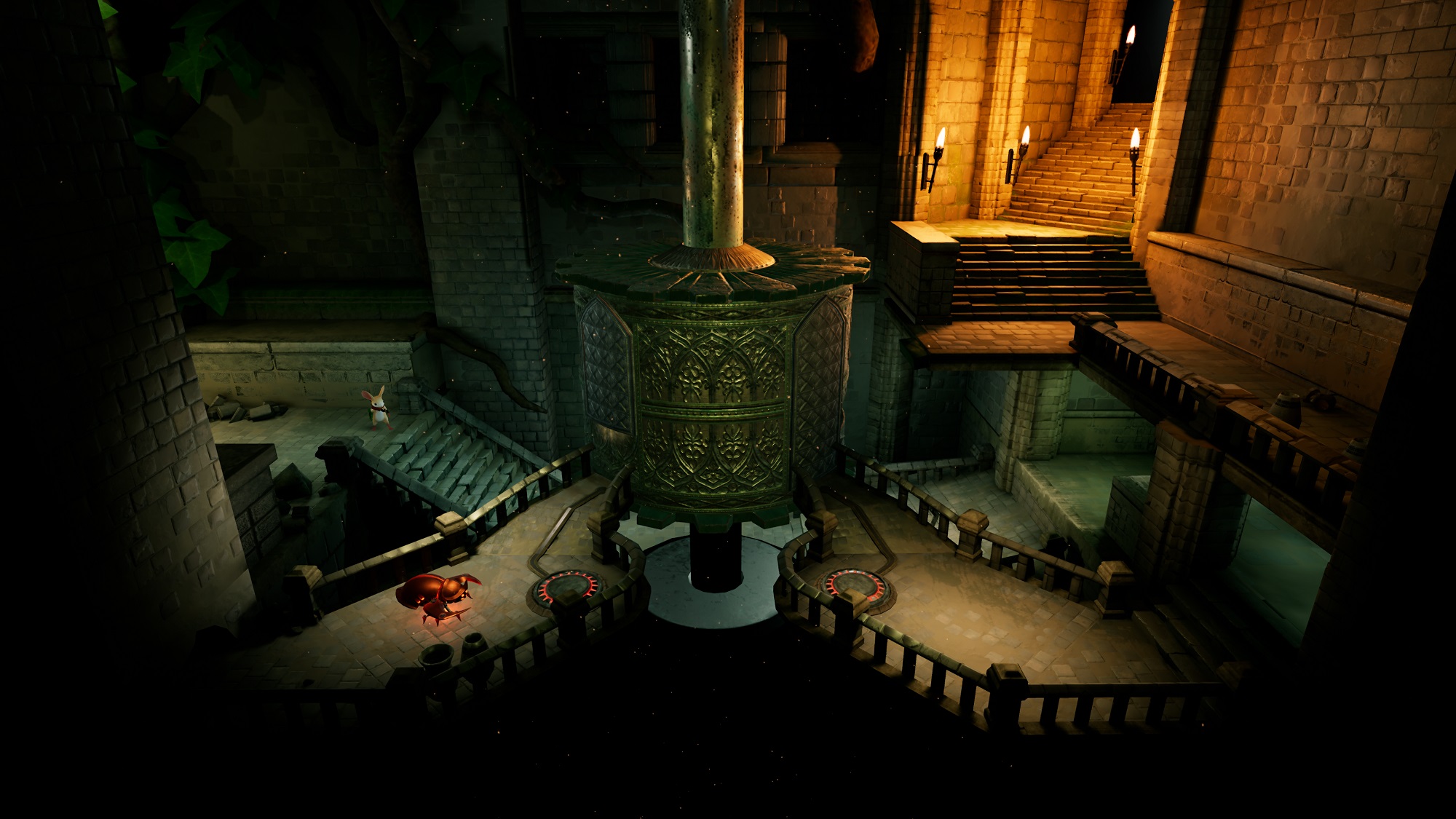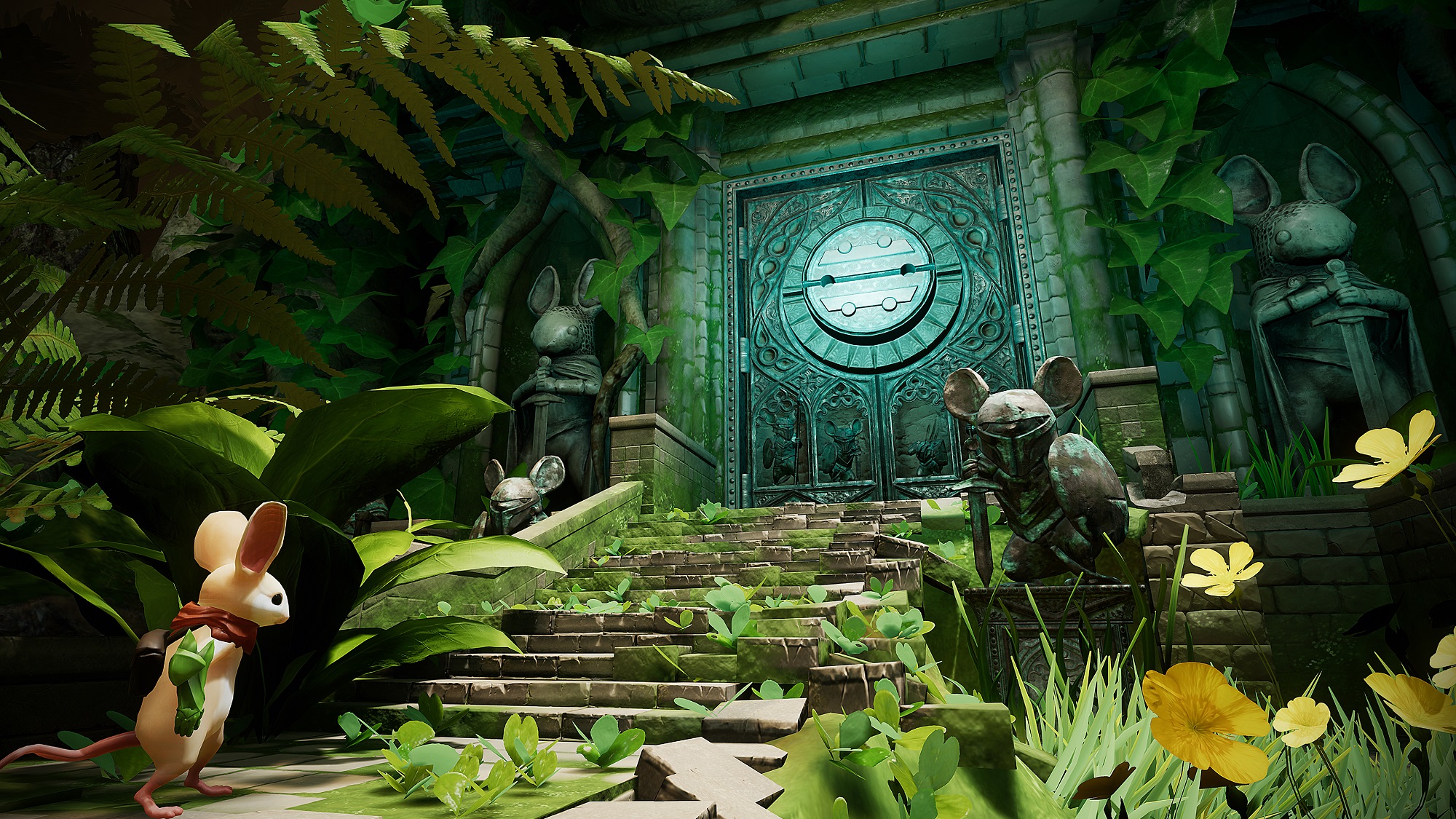Editor’s Note: This is our preview of Moss from E3. The same demo is now being shown at the PlayStation Experience (PSX), so we thought we’d show you our impressions again.
First-person games and VR just naturally go together. Many of the biggest, best, and immersive VR games to date have expertly used the first-person perspective with great results whether it be for shooters, exploration-based adventure games, or even the most esoteric puzzle experiences. But it doesn’t have to always be that way.
Games like Lucky’s Tale proved that you can make something fun and unique that feels perfectly suited to the VR medium without forcing the player into a tacked-on first-person perspective. Now Moss from Polyarc is iterating on that concept with something that feels totally fresh and unique in its own special way.
At first glance when you watch the announcement trailer (embedded above) you’d be forgiven if you didn’t immediately realize that it was a VR-only title. But after spending some time with the game and talking to the team I couldn’t imagine playing it any other way.
The smart usage of VR starts from the very moment I put on the headset. In Moss, you don’t actually play as the little mouse named Quill; instead, you’re the reader of the story. Everything begins with you sitting in front of a book that you can reach out and open using the DualShock 4 controller — I just reach out, hold R2, and move the controller to the side as if I am actually turning the page of a book. As I flip through the pages, which are essentially the opening credits, I eventually reach a page of the story that illuminates my vision and engulfs me.
After the whiteness fades away I’m looking down at a diorama-style level full of incredible detail. Even though this game is coming exclusively to the PlayStation VR (PSVR) the visual fidelity is quite high. Since the DualShock 4 is a tracked motion controller I can move it around inside the game space. Its presence is represented as a white, glowing wisp through the air.
Eventually a small mouse that I now recognize as Quill appears and looks up at me. Instead of being a disembodied floating camera as you are in games like Chronos, you have an actual presence in this world with a stationary camera angle. As you move between scenes the screen fades out and back in so you don’t get turned around with new camera angles.
As I look down at the water below I see my reflection in the water, which Quill notices. The developer tells me to reach out and touch her so I guide the wisp over to her head using the controller and hold down R2. Quill’s eyes close and she purrs quietly while I stroke her hairs.
Using the left stick I can control Quill’s movement and make her attack using a leaf-like gauntlet arm sword, or jump. That’s really all there is to the game, but don’t let the seeming simplicity fool you.
Moss is designed to be approachable and enjoyable for anyone, which means a balanced approach between exploration, puzzles, and combat. The first room I entered had a handful of little scarab-like creatures that I quickly dispatched of, but the rest of my demo was all about puzzles.
Reaching out with the controller again I could move and interact with objects that glowed as the wisp touched them. That includes large blocks, statues, and spinning cylinders. A major theme in Quill is the sheer sense of scale as everything from small plants, leaves, blocks, and more are all enormous in size when compared to Quill. She’s quite similar to a re-imagined modern day Mighty Mouse.
The puzzles started out simply with just movable blocks and a few platforms that needed to be aligned, but the demo’s final puzzle really emphasized why VR is so important for this game. Using the headset and the DualShock 4’s motion tracking, mixed with the actual analog stick movements, things got very complex.
I needed to both survey the level by moving my head from side-to-side and leaning around obstacles, as well as pick up a creature and move it across the level using the DualShock’s tracking, while also keeping Quill in place using the left thumbstick. You couldn’t have puzzles like that outside of VR and when I finally figured out how to manipulate the level to my advantage it was an extremely satisfying “A-ha!” moment.
Moss is designed to be a game for everybody and from what I’ve seen I couldn’t imagine someone that likes the childlike wonder and beauty of a well-made game not enjoying Quill’s quest. There is enough gameplay diversity to satisfy all types of players and it’s just simple enough, with enough layers of complexity, to scratch that Zelda-like VR itch for the core gaming crowd.
You can more about Moss in our announcement article, which includes an interview with one of the game’s main developers. Let us know what you think down in the comments below!






























